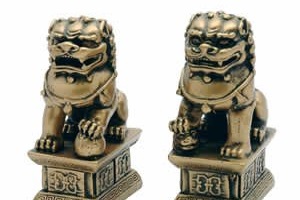Paper Lantern Decorations For Various Types Of Luck
Paper lanterns have been used in Chinese culture for centuries.
They have been documented to be used since ancient times for decorations especially during festivals and auspicious events.
They almost always come in the color red. And Chinese words are sometimes written on them to specify the reasons for their use.
For example, during a Chinese wedding, we can often find red lanterns used for decorations in ceremonial halls or rooms. This practice can still be widely witnessed today in this modern age.
The most common word inscribed on these beautiful red paper lanterns is 喜喜 which literally translates to happiness happiness. Signifying double happiness and the attraction of positive yang energy.
This is a strong cultural symbol of fertility. So it’s akin to wishing the married couple a blissful marriage and starting a family with the arrival of children.
A traditional practice is to hang two of such lanterns next to each other with a lighted candle within on both sides of the bed. If the two candles burned at a similar speed and goes out at the same time, it signifies a happy and long marriage.
For wealth luck, the word 福 is usually printed on them.
Without any wordings on the lanterns, they are still generally believed to by emblems of good luck. Thus, their generous use during auspicious festivals.
You can also often find them being used during business opening ceremonies, coming home celebrations, and celebrations of recognition and promotions, etc.
So welcomed are lanterns in Chinese culture that there is a special day each year set aside for celebrating lanterns.
This is the lantern festival of spring celebrated on the fifteenth day of the first month in the Chinese lunisolar calendar.
Do not confuse this with the mid-autumn festival of September where lanterns also play a starring role together with mooncakes.
Finally, even though red lanterns are auspicious items often used in feng shui, do restrain yourself from using them excessively in a confined space.
Too much of a good thing can make it bad.



